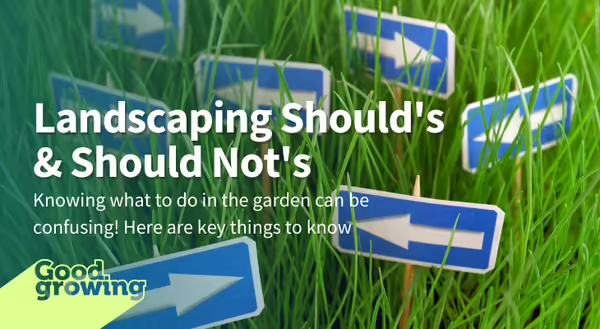
In all walks of life there are do’s and don’ts, but in my world of teaching horticulture a very rare word to use is “should.” I don’t like to use the word should. The word “should” tends to turn people off when receiving advice. When people call the Extension office, I make a conscious effort not to “should” all over them.
However, there are a few rare occasions I do use the term should when it comes to landscaping. Following are a few of those instances.
My Should's and Should Not's
You should conduct a soil test before adding amendments.
Soil testing is something you will likely hear at some point when you talk to an Extension educator. We do not get a kickback from the soil testing companies when we say this. Often the request for soil testing has to do with adding amendments to the soil. Someone may call the office asking “How much sulfur to add?” or “Why type of fertilizer do I need?” Without a soil test, all we have is a guess. And a guess could be a waste of your money and time. It may even lead to long-term harm to your soil. Not every situation requires a soil test, but when it does, it gives you a place to stand to assist in making future decisions.
You should read and follow pesticide labels
A pesticide is any product created to control another living thing. These can be synthetic or organic. Pesticide is an umbrella term that covers insecticides, herbicides, fungicides, rodenticides, and many other products. Maybe you’ve used a particular product dozens of times. But even very common products change. Or maybe the company discovers the rate of application could be improved. Or very commonly, a product name has different product lines. Take the popular insecticide brand Sevin. You can find bottles of Sevin with the active ingredient carbaryl or zeta cypermethrin or bifenthrin, or even a combination of these. Plus, you’ll find different formulations and rates for each. Without fail clients will call me this summer with a problem stemming from not reading a pesticide label. Please read and follow your labels!
You shouldn’t use plastic under mulch
There are many things someone can layout under their mulch. I may recommend most to avoid the use of landscape fabric. Or caution on the use of certain cardboards. Even overdoing it with the newspaper. But one thing I will use the s-word is on plastic under mulch. By plastic, I am referring to the clear or black sheets of plastic that are not permeable. Yes, I understand landscape fabrics are a type of plastic but that’s another article. Very often I see plastic sheeting placed around trees and mulch dumped on top. Plastic is impermeable. It acts as a barrier to water and air passing in and out of the soil. And it doesn’t decompose. On my drive to work, I see a handful of trees where the trunk is pushing up against plastic sheeting. This could girdle and kill the tree.
You should always consider a plant’s mature size
They look very cute sitting in their pot at the garden center, but those are young plants. Just as our children grow into teenagers, plants age into maturity, and if you plant them too close to your home, they’ll grow up and eat your house! Just like a teenager. Read the plant tag and space plants out according to the size they will become.
Good Growing Tip of the Week: Does some garden advice or gadget sound too good to be true? It probably is. You should do background checking on touted silver bullets and magic garden advice. The only certainty of gardening is that nature bats last.